Body-Grip Traps - Identification, Use and Removing a Dog
Trap Identification
Body-grip traps come in a variety of sizes with openings ranging from 5 to 12 inches.
Body-grip traps are used in water and on dry land, depending on what is being trapped.
In most cases, the largest body-grip trap used on dry land has a 7 inch opening.
Larger sizes are impractical, and depending on where set, may require enclosures or protection to avoid catching a dog.
The body-grip traps with 5 and 6 inch openings pose little risk to catching a dog around the head.
Body-grip traps used in water may vary in size.
Those traps with 5 and 6 inch openings will be used to target muskrat and mink.
Larger traps with 8 to 12 inch openings will be used to target beaver.
Be aware of what animals may be present and who may be sharing the landscape with you.
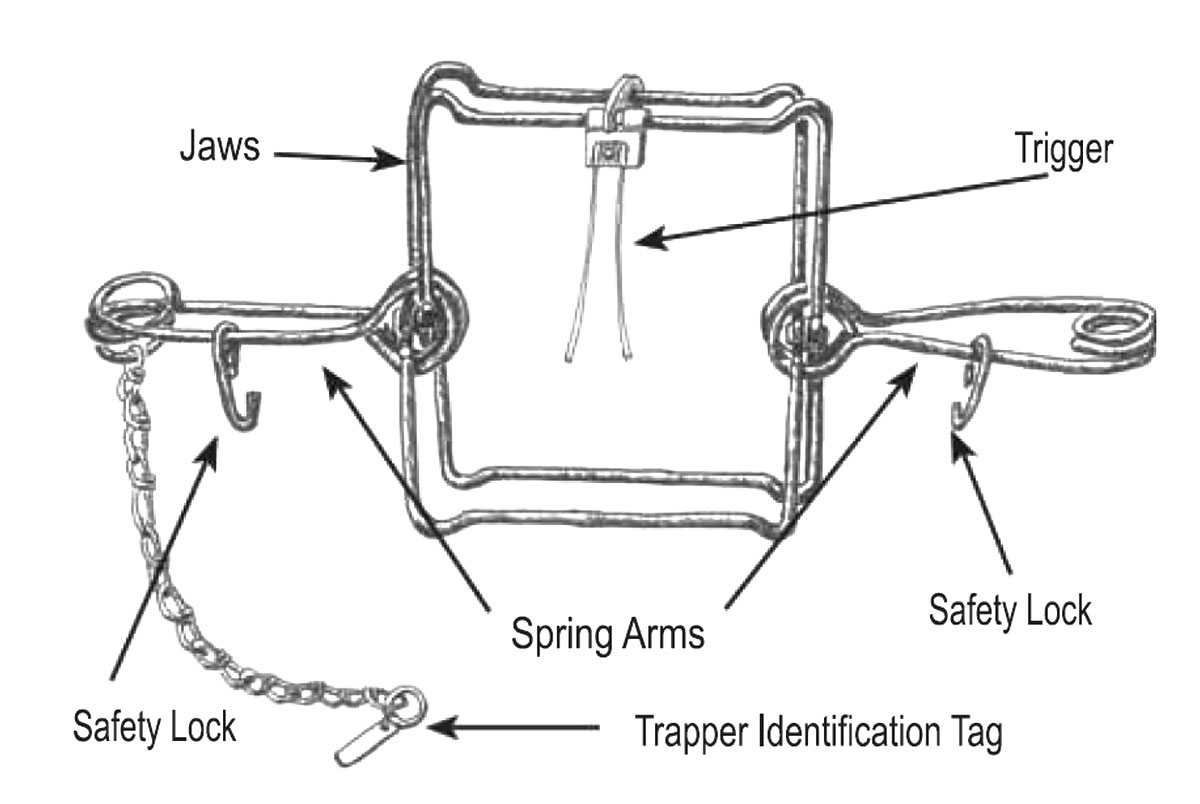
How to Remove a Dog Caught in a Body-Grip Trap
If a dog is caught in a body-grip trap, you have a brief amount of time to safely release the animal. It is important to act as quickly as possible.
Squeeze Springs...
Immediately squeeze both springs...
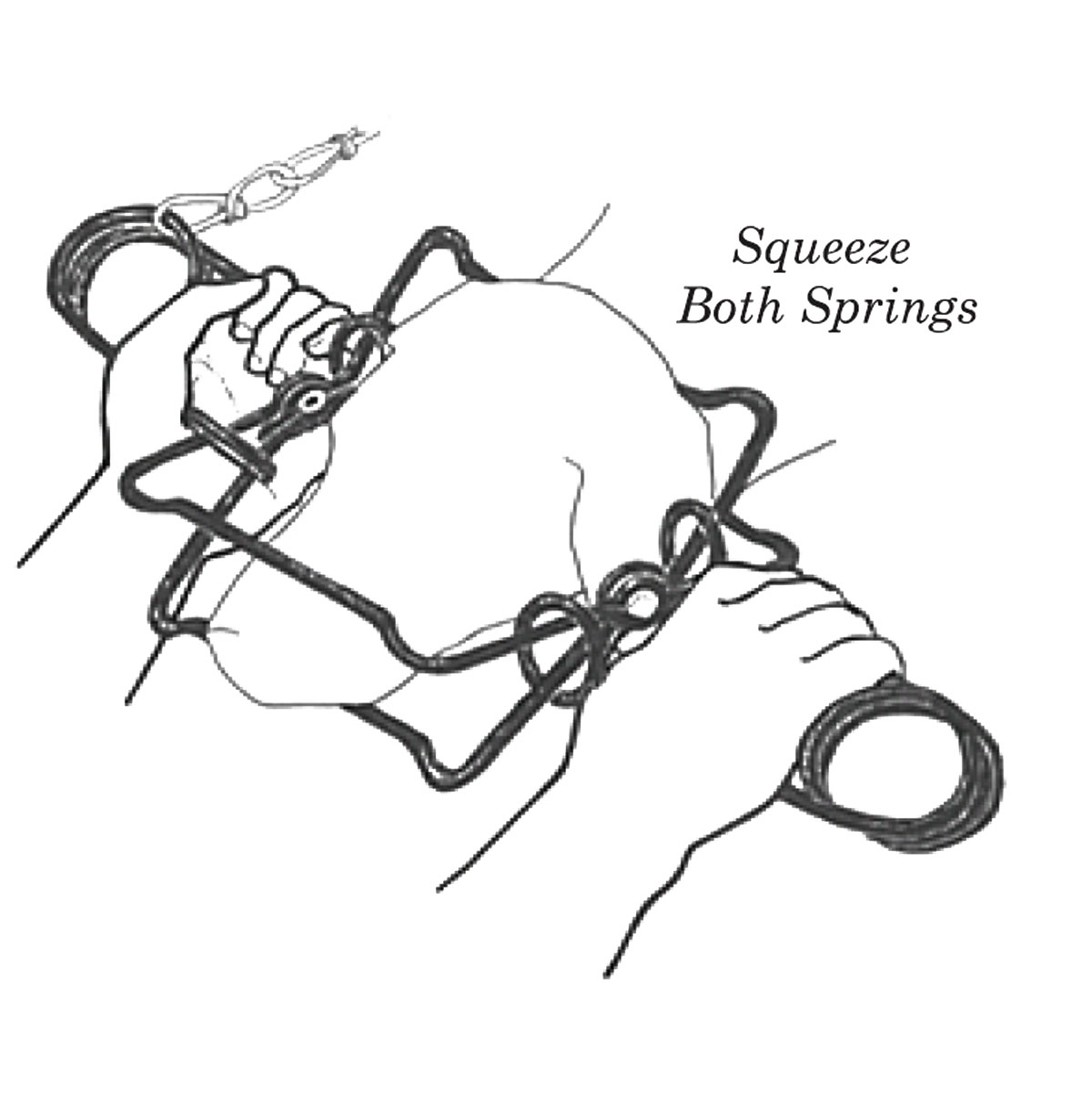
Twist Trap 90 Degrees
...and turn the trap so the jaws are not placing pressure on the dog's windpipe.
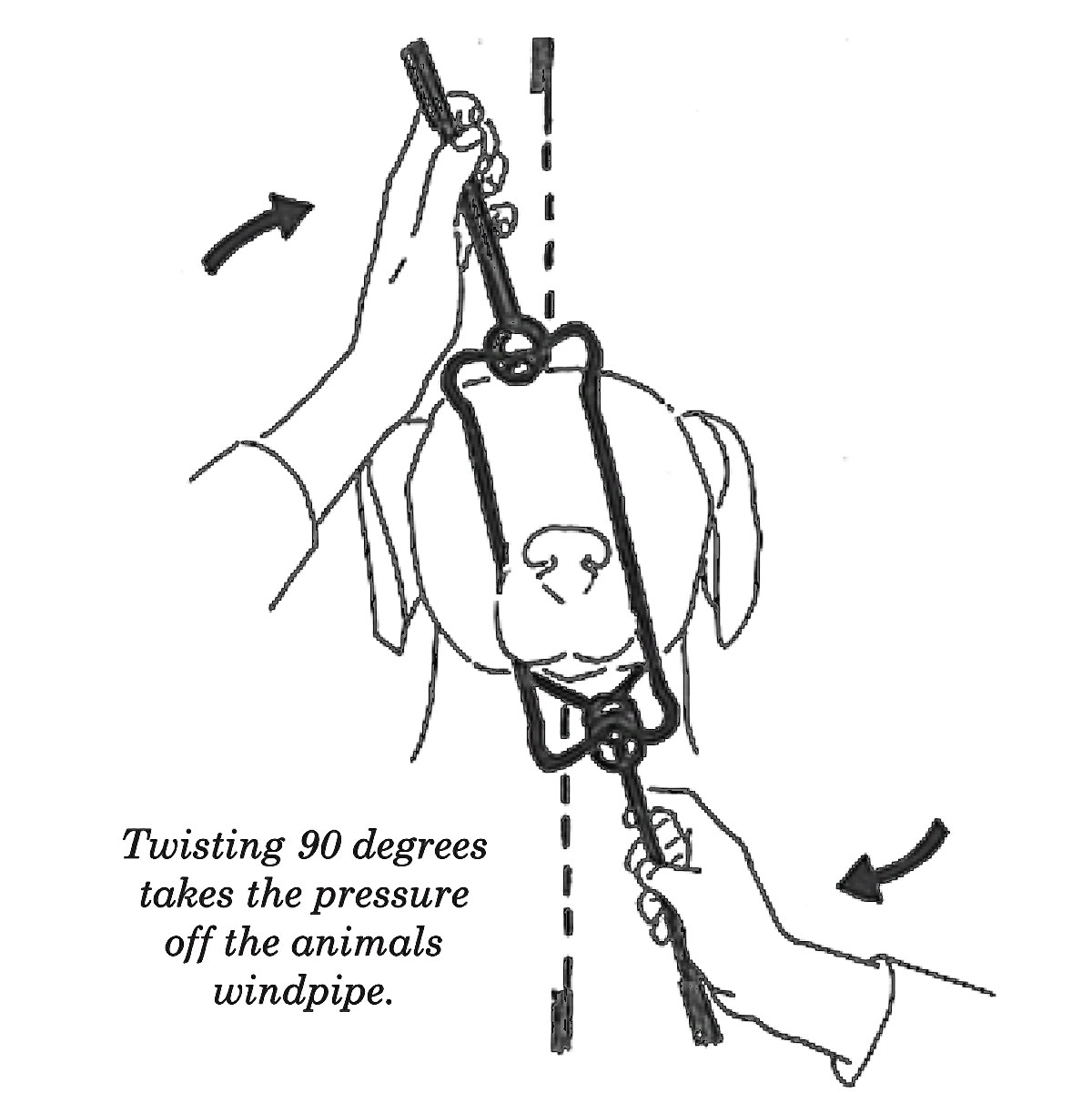
Compress and Lock Both Springs
Compress one of the springs using both hands until you're able to fasten the safety lock over the opposite side of the spring.
Secure the safety lock, which keeps the spring compressed.
Again, use both hands on each spring if necessary. This relieves the pressure from one side of the trap.
Repeat the same process for the other spring.
Slide Trap Off
Slide the dog's head from between the jaws of the trap.
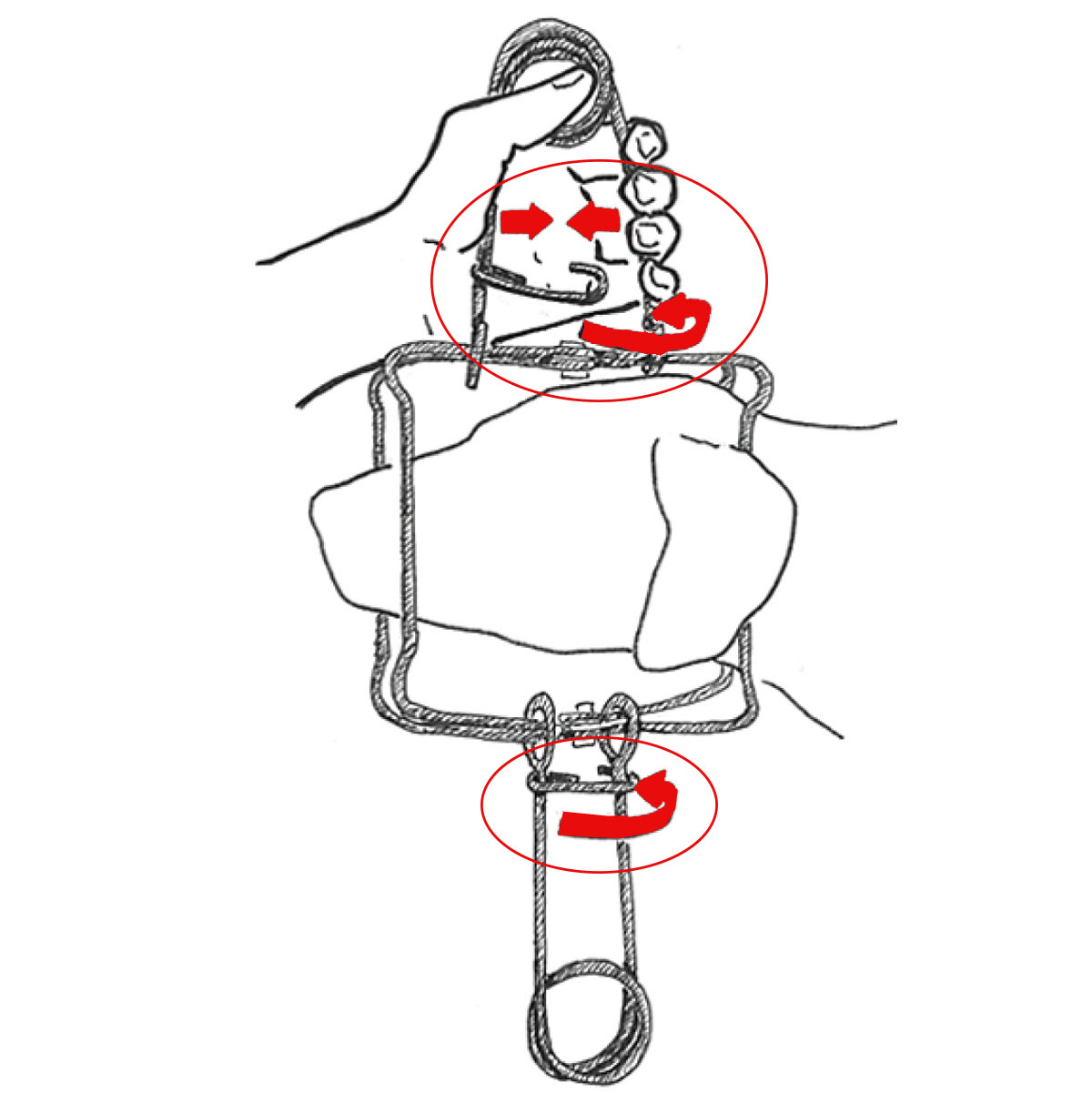
The Rope Trick
If you cannot squeeze the springs of the trap easily, a 4-foot piece of nylon rope, belt or possibly a leash will help increase your leverage.
Although you will probably always have a leash with you, try and make it a practice of carrying a piece of nylon rope.
1. Thread the rope through the large rings of one spring. The rings are located where the springs meet the rotating jaws.
2. Bring the rope around and thread it back through the initial ring far enough to provide a good "handle".
3. Put your foot on one end and pull on the free end. This will compress the springs so a safety lock can be latched. Do the same to the other spring.
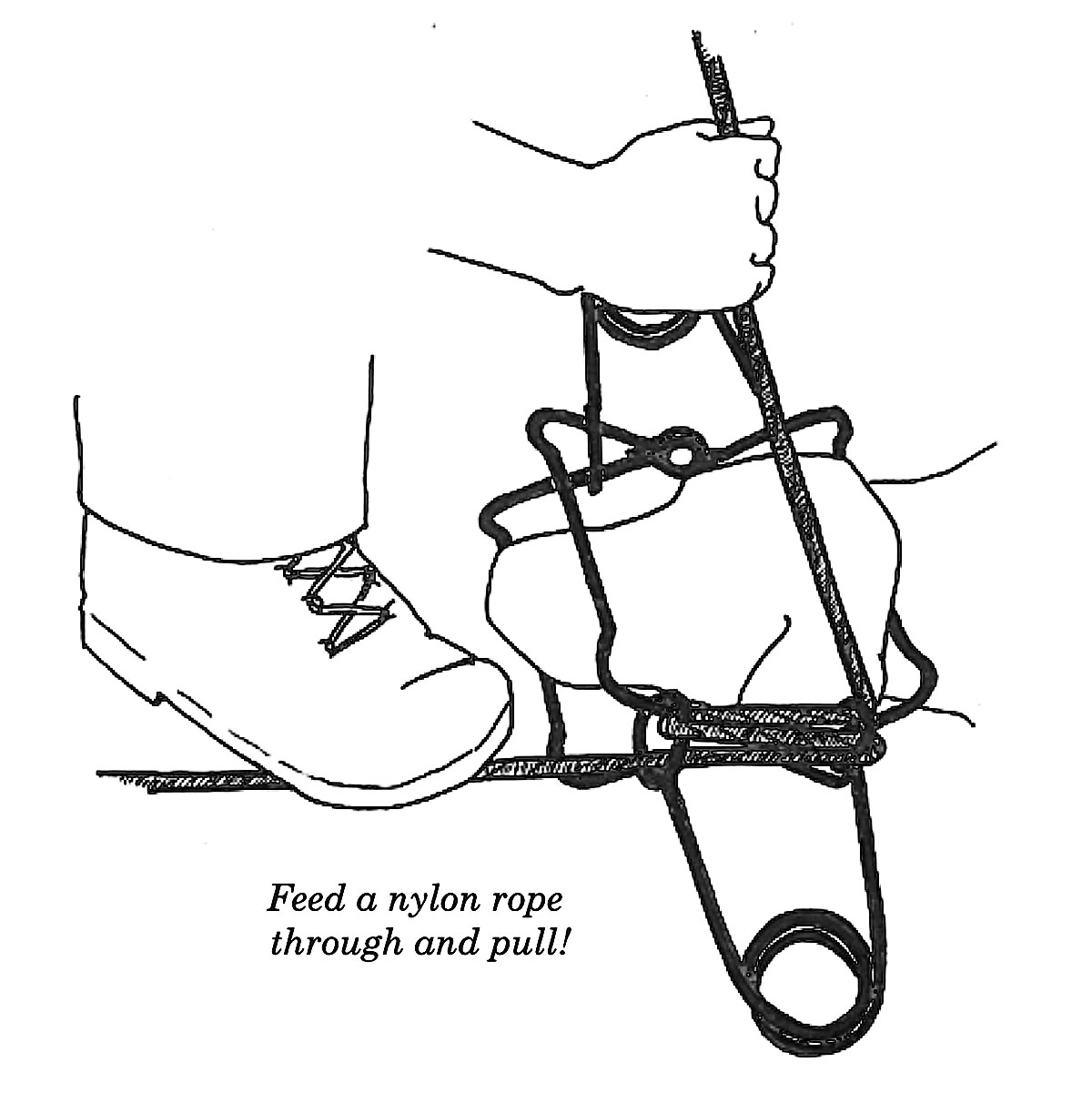
General Trapping Information
In North Dakota, regulated use of bodygrip traps occurs from October through April.
Limited trapping occurs during late spring and summer by landowners or their agents removing nuisance wild animals.
Obtaining permission to go on private property and visiting with landowners will help identify other activities occurring on the same property.
Sharing this knowledge will reduce the potential for problems.
Trapping in North Dakota, which includes using body-grip traps, is an important component of furbearer management.
Body-grip traps you may encounter afield are intended to capture mink, fisher, badger, raccoon, fox, skunk and bobcat.
In water, body-grip traps are set for muskrat and beaver.
Trapping in North Dakota is highly regulated; enforced by game wardens; based on sound science; and backed by continued research.
The North Datkota Game and Fish Department and the North Dakota Fur Hunters and Trappers Association review all reported trap incidents to assure continual success with regulated furbearer harvest and other resource users.
Individuals who want to learn more about trapping in North Dakota have that opportunity by attending a fur harvester education course.
